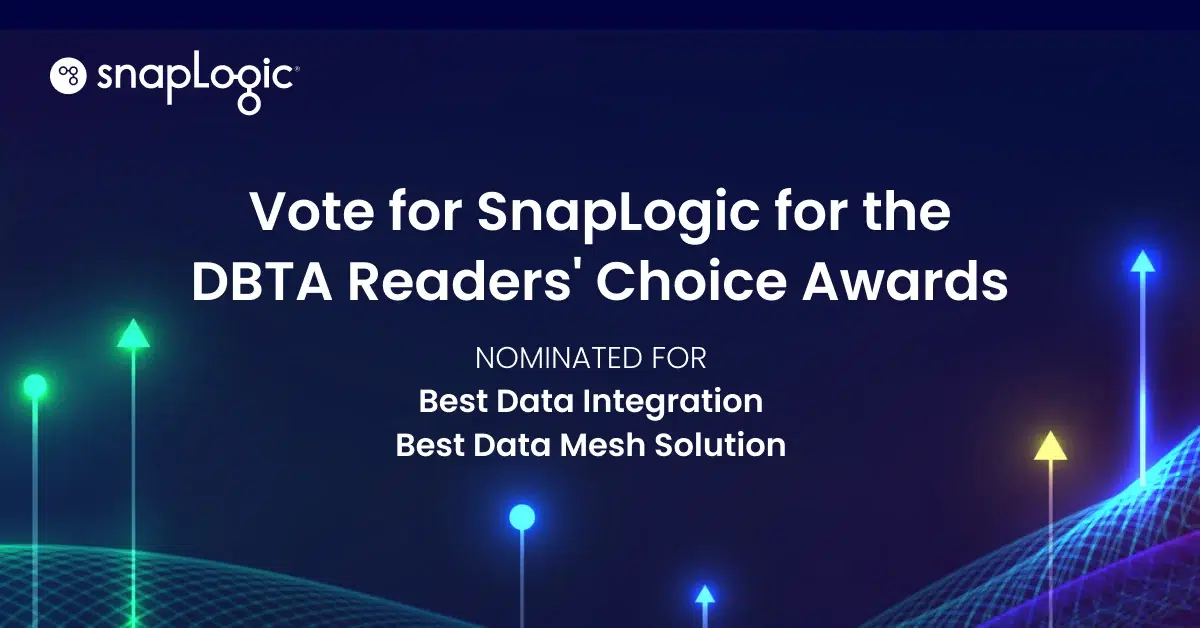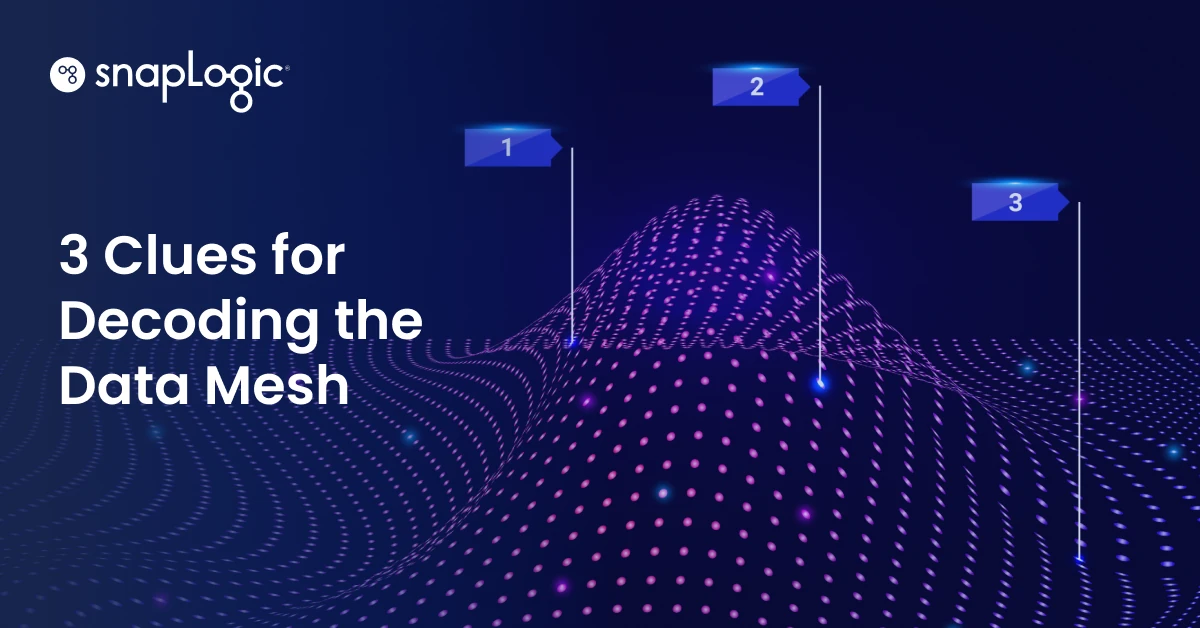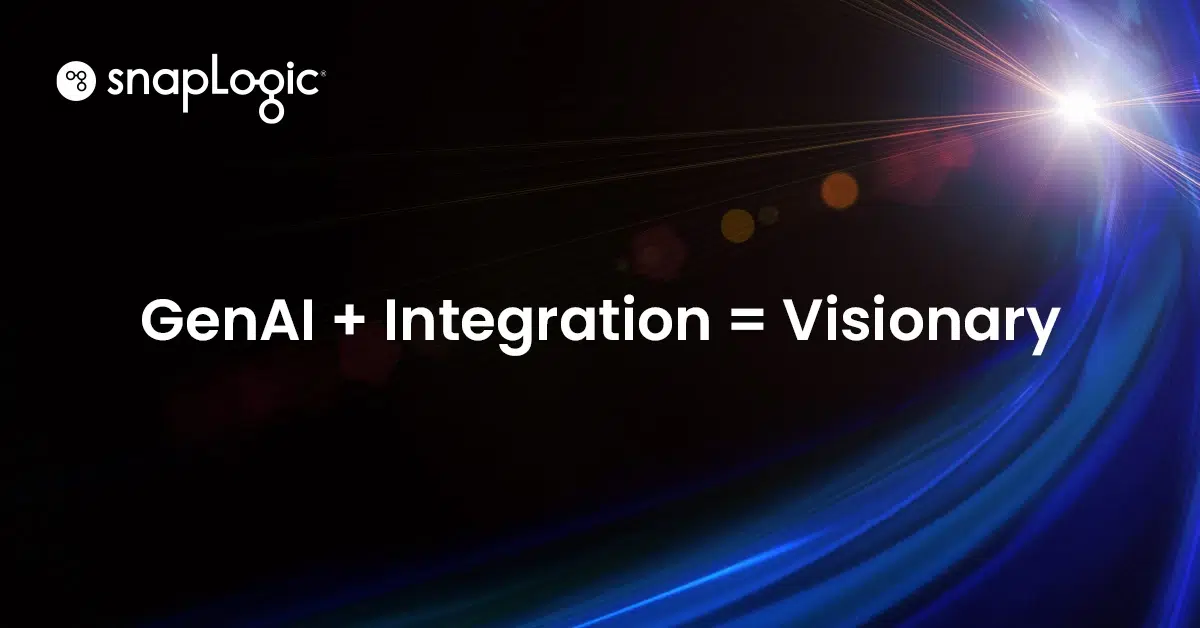Oh, snap! Trend alert. As a self-proclaimed style and fashion follower, I think I do a good job staying on top of the latest trends — though my teenage daughter would somewhat disagree.
But alas, we’re not talking about fashion trends today. We’re talking about what’s hot in business technology. And you have a chance to steer the conversation, dear reader. The polls are now open for the annual Database Trends and Applications Readers’ Choice Awards!
2024 DBTA Readers’ Choice Awards
SnapLogic is thrilled to be on the ballot in two categories this year: Best Data Integration Solution and Best Data Mesh Solution. This is a special award nomination for us because the winners are decided by you, the readers. Our SnapLogic community — or as we fondly call it, the Integration Nation — is best suited to make this choice and we would be honored to have your vote.
Make your voice heard by selecting the best and brightest innovators in Data Integration and Data Mesh. Vote today for the 2024 DBTA Readers Choice Awards.
Thanks for voting…. And if you are still here and reading on… Some more information on these two categories for Data Integration and Data Mesh.
What does it mean to be the best DI solution these days?
The best data integration solution providers out there help their customers eliminate data silos and stop costly and complex integration tool sprawl. Enterprises today benefit from partnering with a cloud-native solution provider that is purpose-built to connect and load data from both on-premise and cloud sources.
When evaluating DI platforms, consider the full scope of what you are looking to connect. Leading DI platforms aren’t just for data integration between data sources — platforms like SnapLogic can also help you integrate applications into the mix, even within complex, hybrid environments.
In addition, the leading DI solutions are prioritizing AI innovation — connecting integrators with LLMs to integrate faster and easier than ever before and giving customers a path to implement generative AI capabilities across the organization. Here are a couple of examples of products SnapLogic launched recently that unlock both of these critical components for our customers:
- SnapGPT: The world’s first generative integration solution that acts as an integration copilot, providing contextual suggestions and real-time guidance throughout the integration process, providing self-service to users of all experience levels while eliminating strain on IT. SnapGPT empowers employees with any job title or technical skill level to easily and quickly create workflows and data pipelines via natural language prompts in nearly 100 different languages. SnapGPT auto-generates sample data for testing and comprehensive documentation for each integration, allowing employees to validate new business workflows and put them into production 10-50 times faster.
- GenAI Builder: Ensures your organization’s data is AI-ready. GenAI Builder empowers business users to create custom LLM-powered workflows without coding. Whether your HR department needs a question-and-answer workflow for employee benefits, your legal team needs a contract redlining solution, or your analysts need a research report analysis engine, GenAI Builder provides the tools and flexibility to build it all. GenAI Builder can automatically extract valuable data from invoices, purchase orders, resumes, insurance claims, loan applications, and other unstructured sources. Our customers leverage GenAI Builder’s intelligent document processing (IDP) solution to automate tedious document-centric processes, freeing up their teams for higher-value work.
But what is data mesh anyway?
Data mesh is an enterprise data management framework and design pattern that defines how to deploy and manage business-domain-specific data in a way that allows business domains to own and operate their data, implement self-service, decentralize data flows, and manage federated computational governance. Data Mesh empowers domain-specific data producers and consumers to collect, store, analyze, and manage data pipelines without the IT bottleneck.
SnapLogic’s customers can take advantage of data mesh architecture and deliver key results:
- Decentralize data ownership and operations: Allow multiple business domains to logically separate from each other, while enabling a common framework for security and administration, making independent data pipelines and workflows possible.
- Deploy managed self-service: Easy-to-use tools empower anyone to work with data, off-load IT, and boost productivity across business domains.
- Creating a broad set of data products: Support various data technologies, allowing domain teams to develop data products that best suit their business requirements, promoting flexibility and efficiency in data processing, while fostering collaboration and reducing silos among different teams.
- Facilitate data sovereignty and residency: Define data governance policies and rules, ensuring compliance with data regulations such as GDPR or CCPA with the capability to control where data resides and how it’s processed.
Time to vote
To vote for SnapLogic, visit the Database Trends and Applications awards website. And be sure to select both categories — Best Data Integration Solution and Best Data Mesh Solution — before casting your votes.
Voting is open now through Monday, June 3, 2024.
Thank you for your support!
About DBTA
Database Trends and Applications is a magazine covering data and information management, big data, and data science. In addition, their website, dbta.com, connects visitors with white papers, webinars, and other learning opportunities in the field. The DBTA magazine and website deliver advanced trends analysis and case studies serving the IT and business stakeholders of complex data environments. Learn more about DBTA.









